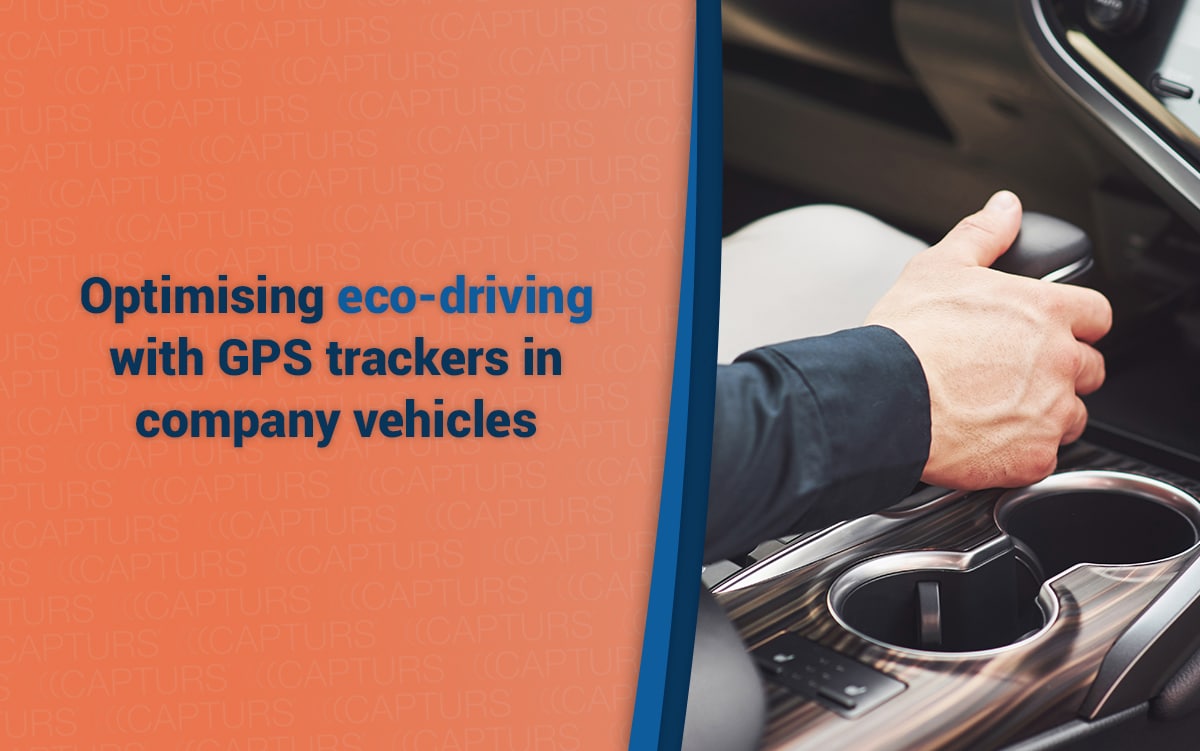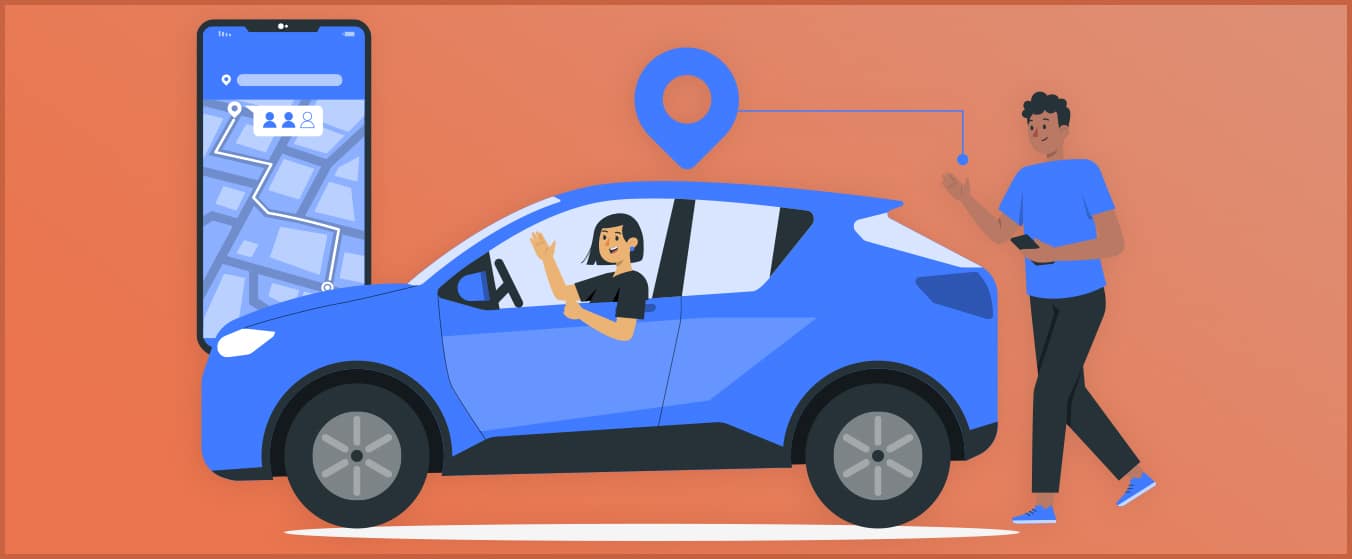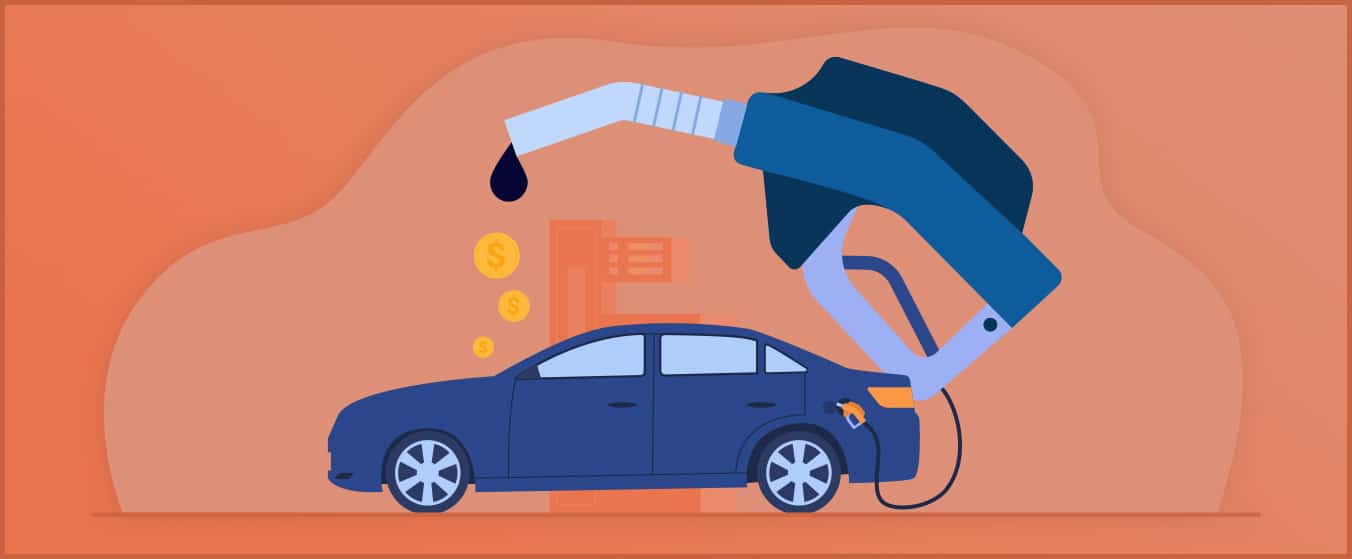Optimize eco-driving with GPS trackers in company vehicles

Eco-driving has become a major topic, as it reduces the environmental impacts of driving while improving vehicle performance and reducing operating costs for drivers.
The purpose of this paper is to describe the basics of eco-driving, show how it can be applied in practice, describe the challenges to its adoption, and propose future prospects for promoting eco-driving. Indeed, since companies have many issues that lead to the use of GPS trackers in their fleet of vehicles, eco-driving is now one of the main uses, especially with the increase of fuel prices.
Before going into the details of eco-driving, it is important to define what eco-driving is. Eco-driving can be defined as driving in a way that reduces fuel consumption and greenhouse gas emissions, while increasing road safety and driving comfort. It is a global approach to driving, which aims to optimize vehicle performance while taking into account the environmental impacts of driving.
It is no longer necessary to remind people that driving a car has a significant impact on the environment. Greenhouse gas emissions, such as carbon dioxide (CO2), contribute to global warming. Emissions of fine particles and carbon monoxide (CO) have negative impacts on human health. Vehicles also contribute to noise pollution and the use of natural resources. Eco-driving is therefore a way to reduce these environmental impacts while improving vehicle performance and reducing operating costs for drivers.
Table of contents
- The foundations of eco-driving in companies
- Apply eco-driving in practice in vehicle fleets
- The challenges of eco-driving in companies
- Prove the work done with GPS trackers for company cars
- The advantages of GPS trackers for company cars for eco-driving
- The different types of GPS trackers available for the eco-driving of vehicle fleets
- The challenges of using GPS trackers for eco-driving
The foundations of eco-driving in companies
Before describing the various eco-driving techniques and the benefits they provide, it is important to understand the environmental impacts of driving. Motor vehicles are responsible for a number of environmentally harmful emissions, including greenhouse gas emissions, fine particulate matter and nitrogen oxides (NOx). These emissions have a direct impact on climate change, air quality and human health.
Greenhouse gas emissions, such as carbon dioxide (CO2), are the main contributor to climate change. Driving is responsible for about 20% of CO2 emissions worldwide. CO2 emissions increase with distance traveled and fuel consumption. Electric and plug-in hybrid vehicles, which run on electricity, have very low CO2 emissions because they do not emit CO2 while driving.
Fine particles and nitrogen oxides (NOx) have significant impacts on air quality and human health. Fine particles can penetrate deep into the lungs and cause respiratory disease. NOx contributes to smog formation and soil acidification. Diesel vehicles emit more fine particles and NOx than gasoline vehicles.
In addition to environmentally harmful emissions, driving also has an impact on the use of natural resources and noise pollution. The production of fuel and vehicles requires large amounts of raw materials and energy. Driving also contributes to noise pollution, especially in densely populated areas.

Eco-driving is therefore a way to reduce these environmental impacts while improving vehicle performance and reducing operating costs for drivers. There are several eco-driving techniques that can be used to reduce fuel consumption and greenhouse gas emissions, improve road safety and increase driving comfort.
Apply eco-driving in practice in vehicle fleets
Now that we understand the basics of eco-driving and the different techniques that can be used to reduce the environmental impacts of driving, it is important to show how these techniques can be put into practice.
Good practices to adopt for eco-driving include:
- Anticipate driving situations: planning your route in advance, avoiding traffic jams and driving at off-peak times can reduce fuel consumption.
- Drive at an appropriate speed: Driving at a reasonable speed reduces fuel consumption and greenhouse gas emissions. In addition, it will increase the safety of employees in company cars.
- Smooth braking and acceleration: Smooth braking and acceleration reduce fuel consumption and greenhouse gas emissions.
- Maintain your vehicle in good condition: Regular vehicle maintenance can reduce fuel consumption and greenhouse gas emissions.
- Choose an ecological vehicle.

To choose an ecological vehicle, it is important to take into account several criteria:
- Fuel consumption: the lower the fuel consumption, the greener the vehicle.
- Greenhouse gas emissions: the lower the greenhouse gas emissions, the greener the vehicle.
- Fine particle and NOx emissions: the lower the emissions, the greener the vehicle.
- Clean technologies: electric vehicles and plug-in hybrids have very low greenhouse gas emissions because they do not emit any while driving.
Finally, to maintain your vehicle to reduce fuel consumption, it is important to :
- Check tire pressure regularly: low tire pressure increases fuel consumption.
- Change your air filter and oil on time: A clean air filter and oil keep the engine running at optimum efficiency, thus reducing fuel consumption.
- Use quality fuel: Using quality fuel allows the engine to run more economically.
The challenges of eco-driving in companies
While eco-driving offers many benefits to drivers and society, there are also challenges to adoption.
Barriers to eco-driving adoption can be grouped into several categories:
- Cost: eco-friendly vehicles can be more expensive to purchase than traditional vehicles, which can deter drivers from buying them.
- Availability of charging infrastructure: For electric and plug-in hybrid vehicles, the availability of charging infrastructure may be limited, which may deter drivers from purchasing them.
- Driving habits: Drivers may have driving habits that are not compatible with eco-driving, which can make it difficult to adopt this approach. This is why it is essential to establish real-time monitoring.
- Perception of eco-driving: some drivers may perceive eco-driving as restrictive or less efficient than traditional driving, which may discourage the adoption of this approach.

To overcome these barriers and promote eco-driving, it is important to put in place policies and programs to :
- Promote access to green vehicles: offering financial incentives for the purchase of green vehicles, promoting the development of charging infrastructure, and offering green vehicle rental or sharing systems can facilitate access to green vehicles.
- Promote eco-driving education: Providing training in eco-driving techniques can raise awareness of the benefits of eco-driving and encourage drivers to adopt this approach.
- Encourage companies to adopt eco-driving: Again, offering financial incentives for companies that adopt eco-driving can help motivate companies to change their driving practices and educate their employees about the benefits of eco-driving.
- Equip vehicles with GPS trackers to monitor an eco-driving policy.
The advantages of GPS trackers for company cars for eco-driving
GPS trackers are navigation tools that allow you to locate a vehicle in real time and optimize routes to reduce fuel consumption. There are several advantages to using GPS trackers for eco-driving:
- Route optimization: GPS trackers help plan the most fuel-efficient routes. They can also help avoid traffic congestion and congested areas, reducing fuel consumption and greenhouse gas emissions, and keeping crews organized.
- Improved driving performance: GPS trackers can provide real-time driving information such as speed, acceleration and distance traveled. Drivers can use this information to improve their driving and reduce fuel consumption.
- Driving data monitoring: GPS trackers can monitor driving data, such as fuel consumption, greenhouse gas emissions and distance traveled. Drivers can use this data to understand their fuel consumption and identify areas where they can improve their driving. This data, in addition to being used for eco-driving, can be used as proof of work for customers, for example.
- Better management of vehicle maintenance, which, as mentioned above, makes the vehicle less polluting.
The different types of GPS trackers available for the eco-driving of vehicle fleets
There are different types of GPS trackers available for eco-driving, each with specific features and functionality:
In-vehicle GPS trackers: These GPS trackers are built directly into vehicles and can be used to track fuel consumption, greenhouse gas emissions and distance traveled. They can also be used to plan the most efficient routes and provide real-time driving information. These GPS trackers are generally more expensive than other options, but they can offer more advanced features.
Portable GPS trackers: These GPS trackers are stand-alone devices that can be installed in vehicles. They will communicate the same type of information as the on-board trackers, but without the ability to retrieve proprioceptive information such as instantaneous fuel consumption. These GPS trackers are generally less expensive than in-vehicle GPS trackers, but they may offer less advanced features. These GPS trackers are generally the most commonly used for theft tracking, but can also be used for eco-driving.

GPS applications for smartphones: These applications can be downloaded to smartphones and can be used to track distances traveled, speeds, fuel consumption. They can also be used to plan the most efficient routes and provide real-time driving information. These applications are generally the least expensive, but they can offer less advanced features.
The challenges of using GPS trackers for eco-driving
While GPS trackers offer many benefits for eco-driving, there are also challenges to their use:
- Potential costs associated with purchasing and using GPS trackers: GPS trackers can be expensive to purchase, and some models may require monthly subscriptions to use all features. This may deter some drivers from using them.
- Privacy issues related to the use of GPS trackers: GPS trackers can collect data about drivers’ movements, which can be used for commercial purposes or to monitor drivers. This can raise privacy concerns for drivers.
- GPS tracker accuracy limitations: GPS trackers, depending on the model or communication technology chosen, can vary in accuracy and can be affected by physical obstacles, such as buildings, trees, or electromagnetic interference. This can make it difficult to optimize routes to reduce fuel consumption.
- Accustom drivers to using these tools. Some drivers may be reluctant to use GPS trackers, preferring to rely on their own experience or driving habits. It is therefore important to educate drivers about the benefits of using GPS trackers for eco-driving, to encourage them to use them.
